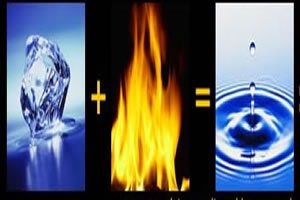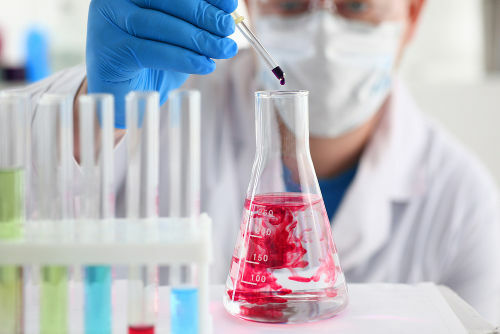Imagine a small pool of water. Over time, the water molecules that are on the surface will begin to evaporate and this will continue until all the liquid changes to a vapor state.
Now consider a half-sealed bottle of water. Even after many hours, we observe that the volume of water inside the bottle does not change. Could it be that in closed systems like this evaporation does not occur as in an open system?
Actually, yes it occurs, because evaporation is when eventually the surface molecules reach enough kinetic energy to break the intermolecular bonds (hydrogen bonds) and break off, escaping out of the liquid and becoming vapour. Inside the bottle this happens to the surface water molecules.
However, there comes a time when this vapor reaches saturation, that is, a maximum point at which it is no longer possible to hold more molecules in the vapor state. Thus, some molecules begin to go through the inverse process, which is liquefaction, returning to the liquid mass.
In this way, a dynamic balance
Therefore, if one molecule goes into the vapor state, immediately another molecule goes into the liquid state. As this phenomenon occurs non-stop and as we cannot see the water molecules, it seems to us that the system is at a standstill. But actually the volume doesn't change because the amount of liquid that evaporates is the same amount of vapor that condenses.Vapor within a closed system, such as in this capped bottle, exerts pressure on the surface of the liquid. Thus, as much steam as possible exerts Themaximum steam pressure.
This maximum vapor pressure varies from liquid to liquid and also with temperature. The maximum vapor pressure of water, for example, is much lower than the maximum vapor pressure of ether at the same temperature. This is because the ether's intermolecular interactions are much weaker than those between water molecules. Therefore, it is easier to break the interactions between the ether molecules.
Do not stop now... There's more after the advertising ;)
This shows us that the higher the maximum vapor pressure of a liquid, the more volatile it is. That's why if we put water and ether in two separate glasses, after a while we will see that the volume of ether has decreased much more than that of water, as it is more volatile.
Now let's talk about the influence of temperature on the maximum vapor pressure of a liquid. At a temperature of 20°C, the maximum water vapor pressure is equal to 17.535 mmHg; at 50°C it changes to 98.51 mmHg; at 100ºC, it is 760 mmHg.
This shows us that the maximum vapor pressure is proportional to the temperature variation and inversely proportional to the intensity of the intermolecular interactions.
Another interesting factor is that, at 100°C, the maximum water vapor pressure is equal to atmospheric pressure, that is, 760 mmHg or 1 atm (at sea level). That's why water boils at this temperature, as the steam manages to overcome the pressure exerted on the surface of the liquid by gases in the atmospheric air.
Another important point is that if we add a non-volatile solute to a liquid, its maximum vapor pressure will decrease due to interactions between the solute particles and the water molecules. this is a joint ownership call tonoscopy or tonometry. See more about this in the related articles below.
By Jennifer Fogaça
Graduated in Chemistry
Would you like to reference this text in a school or academic work? Look:
FOGAÇA, Jennifer Rocha Vargas. "Maximum vapor pressure"; Brazil School. Available in: https://brasilescola.uol.com.br/quimica/pressao-maxima-vapor.htm. Accessed on June 28, 2021.
Chemistry

Colligative properties, tonoscopy, ebullioscopy, cryoscopy, osmoscopy, colligative effects, reduction of chemical potential of solvent, boiling temperature, melting point drop, osmotic pressure, non-volatile solute, solute, solvent, tempe



